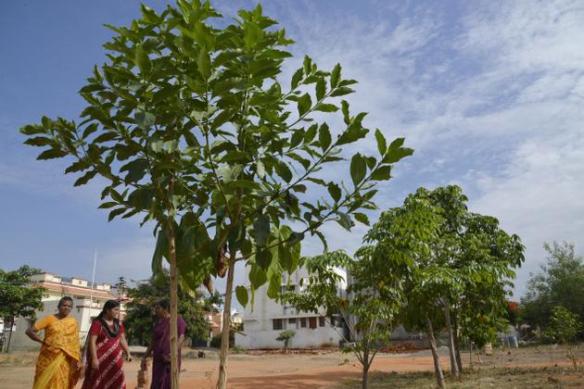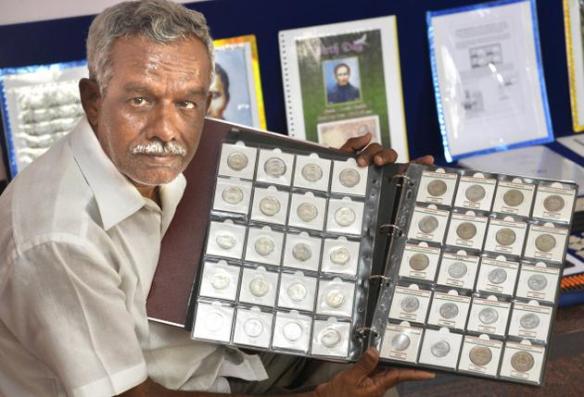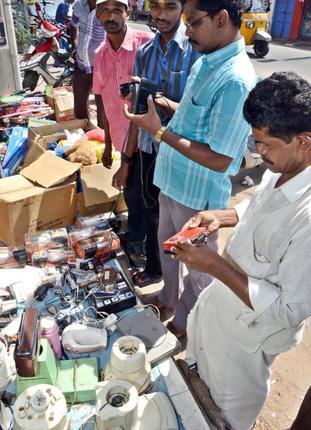It is rare for a city to have an orchestra of just string instruments, but the Coimbatore String Ensemble completes 10 years with nation-wide concerts to its credit

Members of Coimbatore String Ensemble Photo: M. Periasamy. THE HINDU
The story of the Coimbatore String Ensemble (CSE) traverses three generations. It begins in the 1930s with three brothers — C.M. Jesudason, C. Solomon and C. Pagyanathan — all self-taught western classical musicians and music teachers. In their time, they were famous as the Classical Jazz Band and later as a larger troupe, the Immanuel String Band. The youngest of that group, violinist and pianist Sam Mathuranayagam, and director of the Coimbatore Men’s Chorus, Thambu Tharyan, got their students together to form an exclusive string ensemble: the CSE.
In August 2003, after six months of juggling work and music, with stolen rehearsals in a room behind the YMCA, CSE officially opened to Coimbatore’s audience. The concert was over an hour long with complex instrumental pieces including the magnificent Brandenburg Concertos by Bach. Today, CSE is a decade and several National concerts old — experienced enough to have placed Coimbatore firmly on the Indian map of western classical music.
The 2003 concert featured eight violinists, two violists and a guest cellist Cleophas Anthony, director of the Tirunelveli Chamber Orchestra. “Back then, we were bachelors in our college days so we spent all our free time getting better at music, despite being amateurs,” laughs Davis Eleazar. Motivated by the quality and competence CSE had, Cleophas pushed the group to perform with musicians from Delhi, Mumbai and Kolkata at a French opera staged with the Delhi Symphony Orchestra in 2005. “We had received the music earlier on and practised our parts here. We joined the professionals in Delhi just a few days before the concert. It boosted our confidence tremendously that we could match up to their standards,” says Faith Ragland.
Performance invites began coming in soon after, opportunities for collaboration opened up and in 2007, CSE completed a five-city tour with the Poona Musicale Choir. In 2012, they backed the Madras Musical Association and the Poona Musicale Choir, 165 voices in all, at the Museum theatre in Chennai. “Each new concert has helped us grow in some way. For instance, in Delhi we learnt the importance of having a concertmaster handle matters along with the conductor,” says John George who leads CSE now, with the assistance of others like Franklin Tony and Sujeev Das. All along, the ensemble played locally every year at the Christmas concert hosted by the YMCA choir headed by Joseph Kirubabalan. “We all held other jobs but we’d somehow meet once a week to practise together, and there’d be at least one performance each month,” says Joseph.
Playing with an ensemble requires a completely different skill set from being a soloist believes the group. It requires each performer to follow their section leader, stay alert to multiple musical motions simultaneously and tailor-make their personal playing styles to one group uniform. “I learnt so much just by watching the other group members says,” says Jeffri Joshua. “I was in school when I joined CSE two years ago, and everyone around me then thought engineering and medicine was the only future, but here, I found a group of people who took music as seriously as their regular professions,” says Andrea Iris, CSE’s youngest member.
The group’s older members though, believe fewer youngsters these days choose to learn string or wind instruments. “They’re temperamental instruments and they take time to get good at,” says Faith. Joseph adds that the advent of the electronic keyboard lowered incentive because at performances the keyboard can mimic all instruments thus discounting the musician. Even so, young pianist Lemuel Sujeev, has chosen to learn the cello to strengthen CSE’s instrument variety.
Like Lemuel, most of CSE’s members can lay their hands on multiple instruments with equal proficiency. “That’s because in their own churches or localities, they head smaller groups of musicians who meet regularly. So each member has learnt to set music for multiple instruments, harmonise and train each orchestral section to play its specific part,” says Sam. For John and Sujeev, the music goes beyond just a passion; it was what gave them their professions. The transport corporation recruited them to play for their orchestra.
But being a western classical musician is a tough choice in these times. Despite completing a decade in existence, CSE lacks sponsors for its events and still squeezes into each other’s drawing rooms for practice, for lack of an official rehearsal room. “Few cities in the country have the luxury of a full-fledged experienced string ensemble, so we’re glad to have been able to achieve that even as an amateur group,” says Faith. Adds Sujeev, “In the future, we want to keep playing just as much as we have in these last years. We hope more youngsters join us and together we can generate greater interest in classical music in Coimbatore.”
If you would like to know more about CSE, call 94430-16750, 99942-97350
June 07, 2013
http://www.thehindu.com/features/friday-review/music/with-strings-attached/article4787702.ece
Story behind the story
I first met CSE at the the Coimbatore Chamber Chorale’s rehearsal in late 2012. To imagine they’d been around for 10 years and not a word had been written of them in newsprint! I’d been sitting on the story for a while since then though, but when I knew I’d be leaving Coimbatore in a week’s time, this was one story that had to be done. The first time I tried meeting the group, i got a call from the CMC Vellore ICU an hour before. The next thing I knew, I was on a bus headed there. So much for that. Returned some long days later with 72 hours left to uproot and relocate. In between shoving my life into cardboard boxes and writing thankyou/goodbye letters, I squeezed in an interview and two hours of writing time. I couldn’t be happier that my last interview in Coimbatore was in the open grounds of All Souls Church, with that warm chill blowing in the wind and some of the nicest people around for conversation. It’s everything I’ve known Coimbatore to be, and what I’ll always remember it by.










